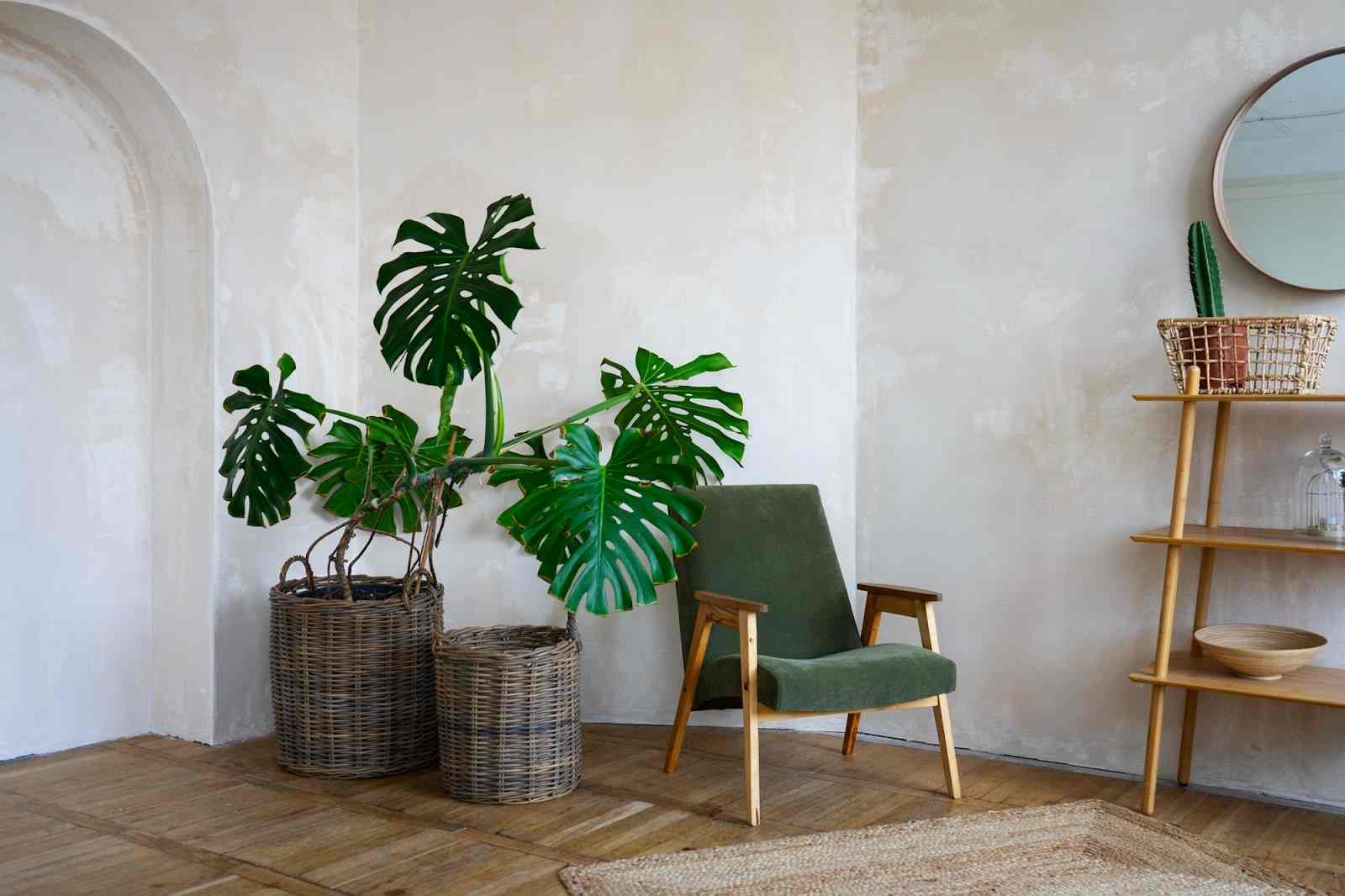
Sustainable design is no longer a trend — it’s a necessity for modern workplaces. As businesses rethink their spaces, eco-friendly office interior design is emerging as both a cost-saving measure and a way to boost employee wellbeing.
In 2025, companies are expected to prioritise smarter, greener work environments that combine technology, wellness, and sustainability.
From biophilic design and modular furniture to energy-efficient lighting and low-carbon materials, the shift is clear: offices that embrace eco-friendly solutions not only reduce their environmental footprint but also enhance productivity, attract talent, and strengthen brand reputation in an increasingly conscious market.
1. Biophilic Design Everywhere
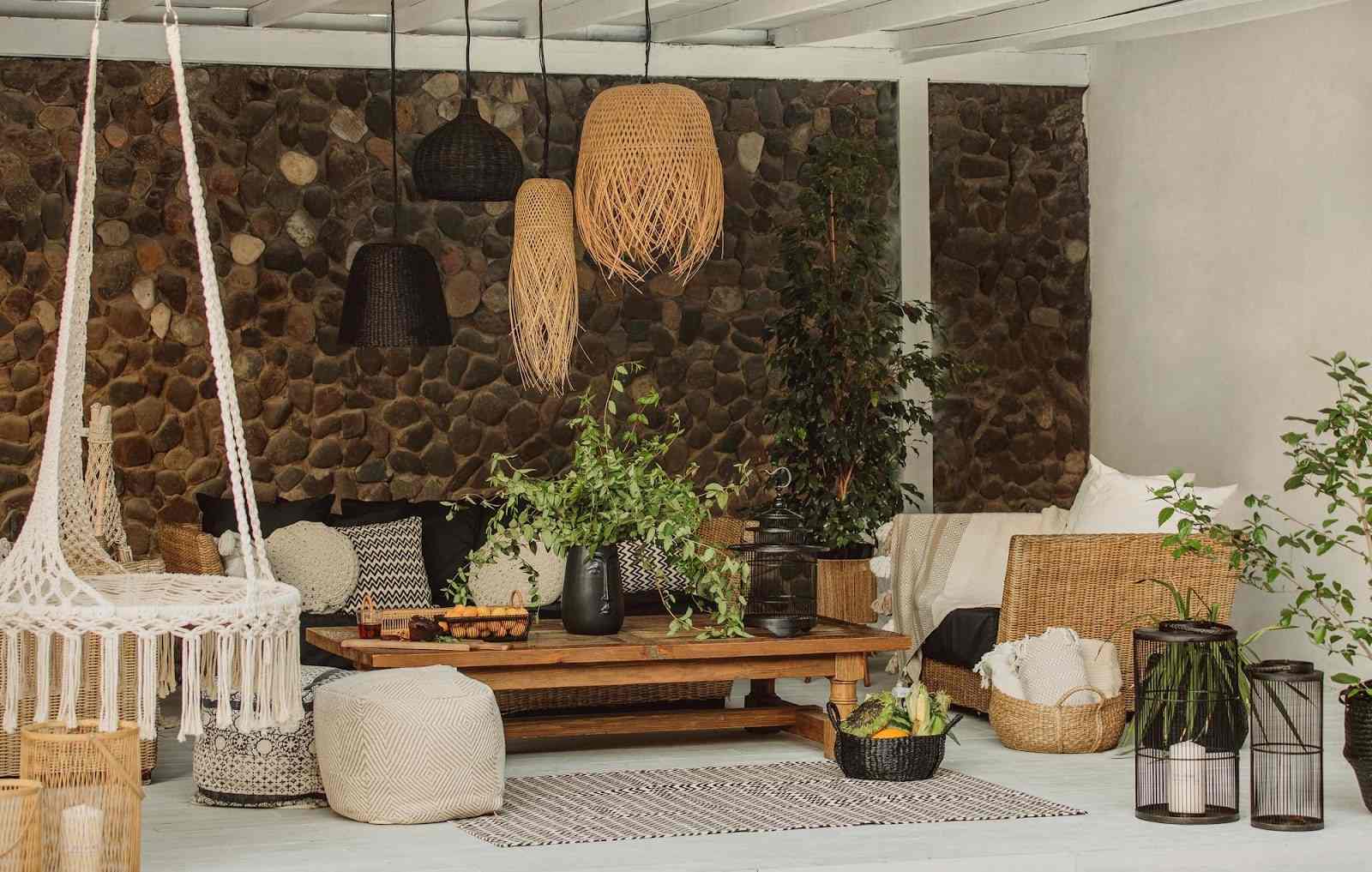
In 2025, biophilic design is no longer a “nice to have” — it is becoming a central feature of eco-friendly office interior design. The concept goes beyond simply adding potted plants to desks; it involves creating workspaces that are intrinsically connected to nature.
This can be achieved through living green walls, indoor gardens, and the use of natural textures such as timber, stone, and woven fibres in furnishings and finishes. Large windows and skylights maximise natural daylight, reducing reliance on artificial lighting and lowering energy costs.
For employees, the benefits are significant: studies have shown that access to greenery and daylight helps reduce stress, improves mood, and enhances focus.
For employers, the result is a healthier, more productive workforce coupled with measurable savings in operational costs. Biophilic design also strengthens brand image, signalling to clients and employees alike that your company is committed to sustainability and wellbeing in equal measure.
2. Smart Buildings & Proptech For Energy Optimisation
Technology is transforming the way we think about sustainable offices, with smart buildings and proptech leading the way.
Today’s eco-friendly office interior design often incorporates IoT sensors that track occupancy, temperature, and lighting in real time, allowing businesses to optimise energy use without sacrificing comfort.
Automated systems can adjust air-conditioning, switch off unused lighting, and fine-tune ventilation based on the number of people in a space. This level of precision not only reduces electricity bills but also creates a more consistent and comfortable working environment.
For administrators, the value lies in data-driven insights — dashboards can highlight inefficiencies, predict maintenance needs, and provide accurate reports for ESG or Green Mark compliance in Singapore.
In short, smart buildings are both eco-conscious and cost-efficient, offering long-term benefits that extend far beyond reduced utility consumption. For businesses aiming to future-proof their workplaces, proptech is no longer optional — it is the backbone of modern sustainability strategies.
3. Dual WELL + LEED (Or Aligned) Certification Strategies
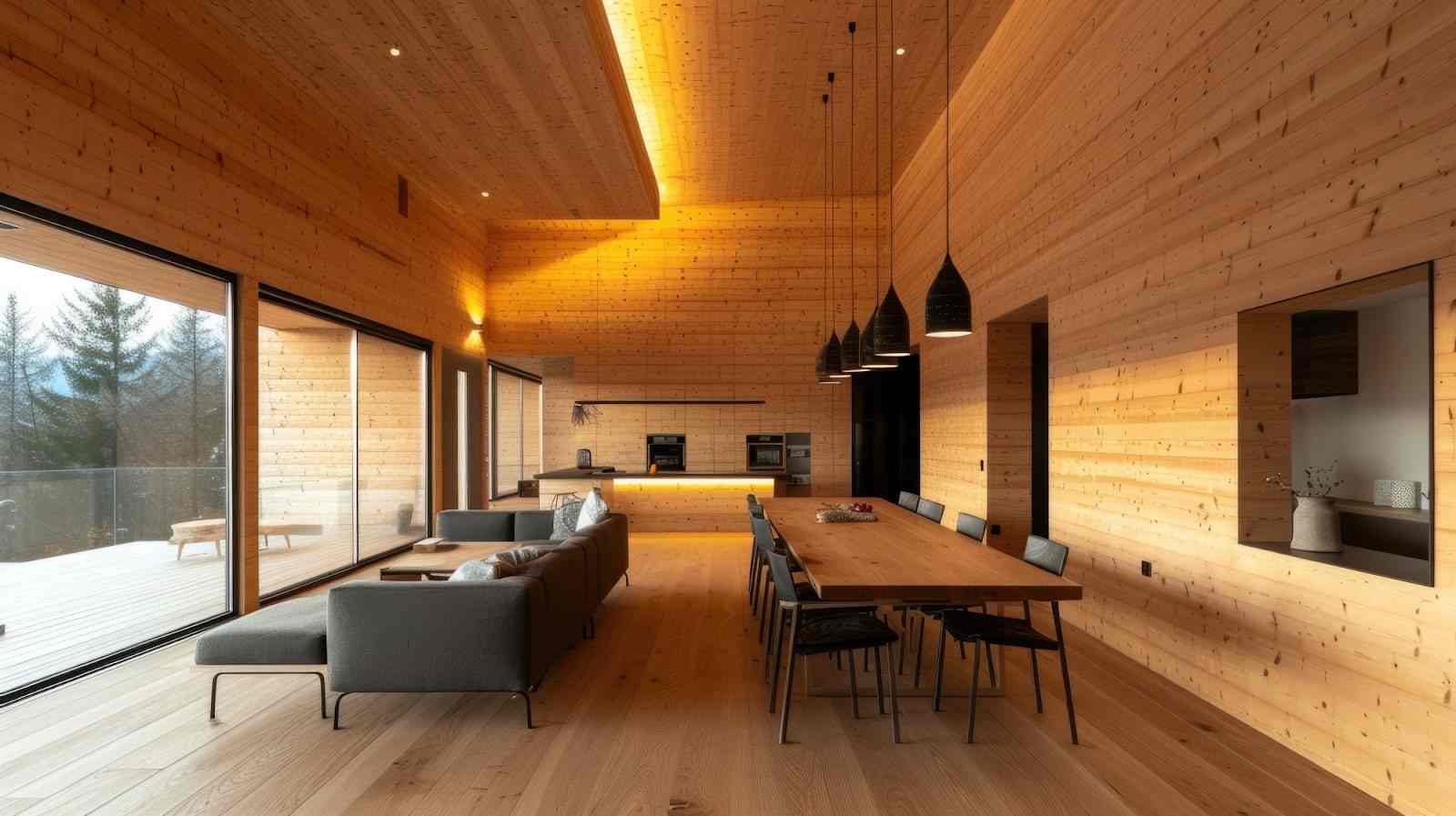
In today’s competitive landscape, businesses are no longer content with ticking a single sustainability box. Many companies now pursue a dual-certification approach, combining WELL Building Standard with LEED (Leadership in Energy and Environmental Design), or aligning their projects with both frameworks.
LEED places strong emphasis on environmental performance — such as energy efficiency, carbon reduction, and material sustainability — while WELL focuses on human health and wellness, including air quality, lighting, and ergonomics.
Together, these certifications create a balanced blueprint for workplaces that are not only sustainable in terms of resource use but also conducive to employee wellbeing.
For corporate administrators, dual certification provides measurable benefits: improved brand reputation, compliance with international benchmarks, and greater appeal to clients and investors seeking proof of environmental and social responsibility.
In Singapore, where Green Mark is also widely recognised, a multi-framework approach signals that a company is serious about aligning with global best practices.
Ultimately, combining WELL and LEED demonstrates a commitment to creating office spaces that enhance business outcomes while genuinely caring for the people who use them.
4. Tunable / Circadian Lighting
Lighting plays a more powerful role in workplace performance than many businesses realise. Traditional fluorescent lighting often disrupts the body’s natural rhythms, leading to fatigue, eye strain, and reduced productivity.
Tunable or circadian lighting systems are designed to counteract this by mimicking the patterns of natural daylight.
These systems adjust colour temperature and brightness throughout the day — cooler, energising light in the morning to stimulate focus, and warmer, softer tones in the afternoon and evening to encourage relaxation.
For employees, the benefits are immediate: improved concentration, better sleep cycles, and reduced stress levels. For employers, tunable lighting reduces energy consumption thanks to advanced LED technology and smart controls that minimise waste.
In Singapore’s high-density business districts, where natural light is not always available, these systems provide a cost-effective solution that enhances both wellbeing and sustainability.
By investing in circadian lighting, companies create an office environment that not only saves on utilities but also supports long-term employee health and productivity — a win for both people and profits.
5. Reclaimed, Recycled & Circular Materials
Sustainability in office design is moving beyond energy efficiency to tackle the environmental impact of materials. Increasingly, businesses are choosing reclaimed wood, recycled plastics, refurbished furniture, and upcycled textiles to bring circular economy principles into their workplaces.
These choices cut down on embodied carbon — the hidden emissions created during production — while also giving offices a unique, character-rich aesthetic.
For instance, reclaimed timber can be repurposed into desks or flooring, while recycled plastics are now being transformed into durable wall panels and acoustic solutions.
Adopting circular materials also signals to clients and employees that your company is serious about sustainability, not just in operations but in every design decision.
For corporate administrators, the practical benefits include lower procurement costs, reduced landfill waste, and compliance with increasingly strict ESG and regulatory standards.
In Singapore’s fast-growing business environment, the ability to showcase a workplace built with recycled and reclaimed materials sets a company apart as both forward-thinking and environmentally responsible.
6. Mass Timber And Low-Carbon Structure Choices
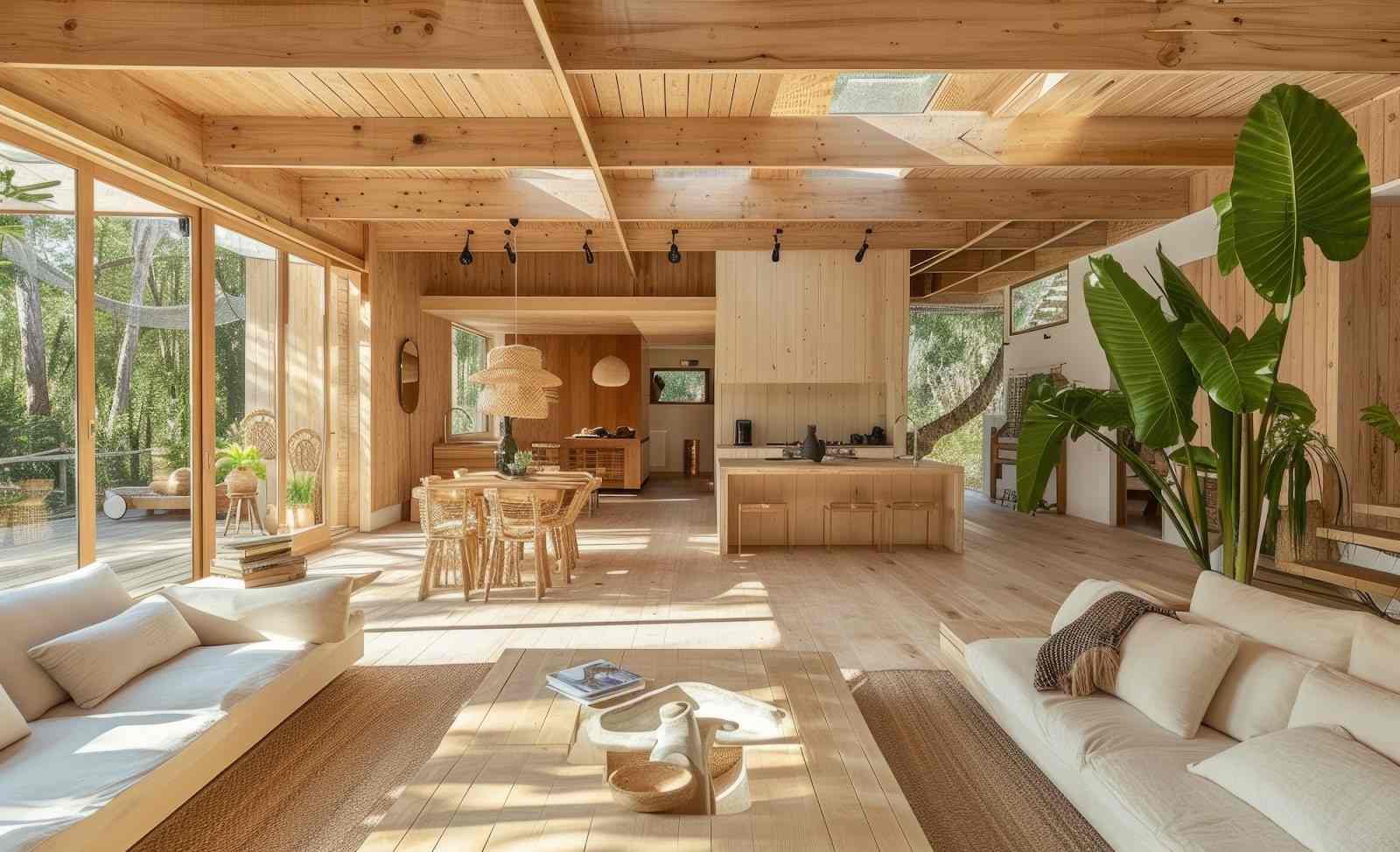
When it comes to reducing carbon emissions at scale, structural materials are a game-changer. Mass timber — including cross-laminated timber (CLT) and glue-laminated timber (Glulam) — is gaining global momentum as a low-carbon alternative to steel and concrete.
These engineered wood products are strong, versatile, and capable of supporting large-scale office projects while sequestering carbon rather than emitting it.
Beyond the environmental benefits, mass timber also offers warm, natural aesthetics that enhance employee wellbeing and create a modern, welcoming workspace.
For businesses, low-carbon structural choices mean more than sustainability — they represent long-term cost savings through faster construction times and reduced energy requirements.
In markets like Singapore, where innovation and efficiency drive business competitiveness, adopting materials such as mass timber positions a company as an industry leader.
7. Modular, Reconfigurable Furniture Systems
In 2025, office furniture is no longer just about style or comfort — it’s about adaptability and resource efficiency. Modular systems allow desks, seating, partitions, and storage to be rearranged or repurposed as business needs change, extending their lifecycle and cutting unnecessary waste.
This approach reduces the costs and environmental impact associated with frequent refurbishments, while giving companies the flexibility to evolve their workspaces without a complete overhaul.
For organisations navigating hybrid work, reconfigurable furniture is a practical solution. Meeting rooms can be expanded or downsized, collaborative areas can transform into private zones, and shared desks can be easily adjusted to different team sizes.
Beyond functionality, many modular systems are now designed with eco-friendly office interior design in mind, using recyclable materials and finishes with low environmental impact.
By investing in this type of furniture, companies in Singapore and beyond create agile work environments that are both sustainable and future-ready.
8. Adaptable/Hybrid Layouts
The shift towards hybrid work has made rigid, one-size-fits-all offices a thing of the past. Today’s workplaces thrive on adaptable layouts that combine open collaboration zones, quiet pods for focused tasks, and multipurpose areas that can be easily reconfigured for different uses.
This flexibility not only supports productivity but also ensures employees feel comfortable, whether they are brainstorming as a group or working independently.
For corporate leaders, the benefits go beyond employee satisfaction. Hybrid layouts maximise real estate efficiency, ensuring that every square metre of office space is optimised and not left underutilised.
They also align with sustainability goals by reducing the need for costly relocations or major redesigns as business models evolve.
In Singapore’s fast-paced business environment, adopting adaptable layouts means companies can seamlessly scale, attract talent, and foster a culture of innovation — all while staying aligned with eco-friendly office interior design principles.
9. Local Sourcing & Supply-Chain Transparency
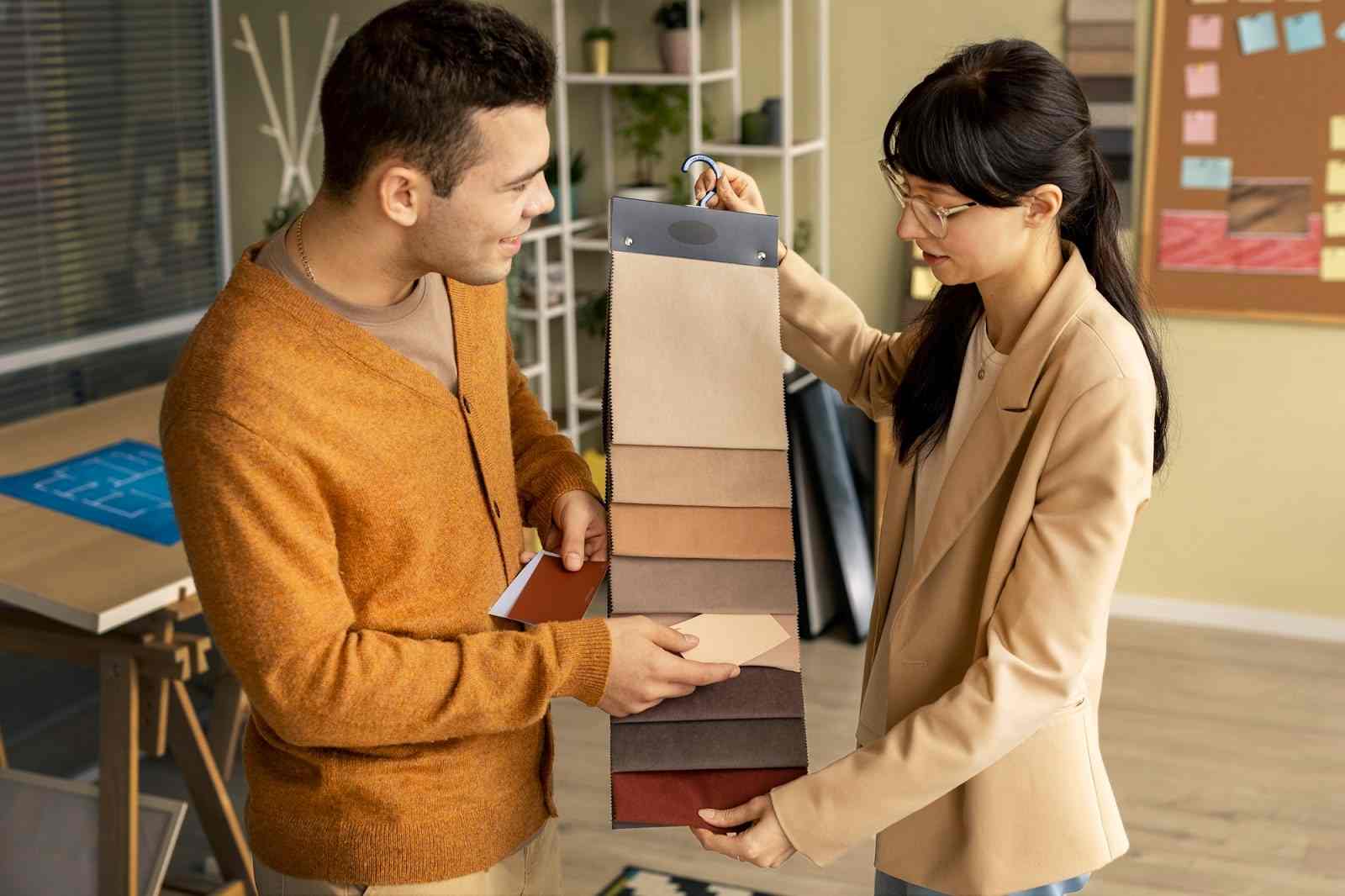
Sustainability is no longer judged solely by what’s inside the office, but also by how those materials got there. Businesses are now turning to locally sourced products — from furniture to flooring — to cut down on carbon emissions tied to long-distance transportation.
This not only reduces environmental impact but also supports regional industries and strengthens supply reliability, which is especially valuable in dynamic business hubs like Singapore.
Transparency across the supply chain is also becoming a priority. Companies want assurance that the wood, textiles, or metals used in their offices are responsibly harvested, ethically produced, and meet recognised environmental standards.
For corporate administrators, this offers both reputational and operational benefits: demonstrating ESG accountability, avoiding compliance risks, and building workplaces that clients and employees can be proud of.
By choosing suppliers that provide full visibility, businesses align their procurement practices with the growing demand for eco-friendly office interior design that is credible and future-proof.
10. Low-VOC Finishes And Healthier Materials
Creating a truly sustainable office extends beyond furniture and layout into the very materials used on walls, floors, and fittings.
Low-VOC (volatile organic compound) paints, adhesives, and finishes are at the forefront of eco-friendly office interior design, as they drastically improve indoor air quality and reduce harmful chemical exposure.
For employees, this translates into fewer headaches, less fatigue, and an overall healthier working environment.
Health-conscious materials are no longer an optional upgrade but an expectation in modern workplaces. From carpets made with non-toxic fibres to upholstery free from harmful flame retardants, businesses are choosing finishes that support wellness as much as they enhance style.
For decision-makers, the advantage is clear: healthier spaces improve staff satisfaction, lower absenteeism, and show a commitment to both people and planet. By prioritising these materials, companies can design offices that are safer, greener, and aligned with global standards of workplace wellbeing.
11. Indoor Air Quality Monitoring & Filtration
Air quality has become one of the most visible markers of a healthy workplace. Offices in 2025 are increasingly equipped with real-time air quality sensors that track levels of CO₂, humidity, and airborne pollutants, giving facilities managers the data they need to maintain a safe and comfortable environment.
Coupled with advanced filtration systems — such as HEPA filters and activated carbon solutions — these technologies remove contaminants and allergens, ensuring cleaner indoor air.
For corporate leaders, investing in air quality monitoring goes beyond compliance. A healthier indoor environment improves cognitive function, reduces sick days, and reassures employees that their wellbeing is being prioritised.
In Singapore’s competitive business landscape, where attracting and retaining top talent is a key challenge, demonstrating commitment to healthier offices is also a reputational advantage.
Integrating air quality monitoring into eco-friendly office interior design is no longer a luxury — it’s a standard that employees and clients now expect.
12. Daylight-First Design & Glare Control
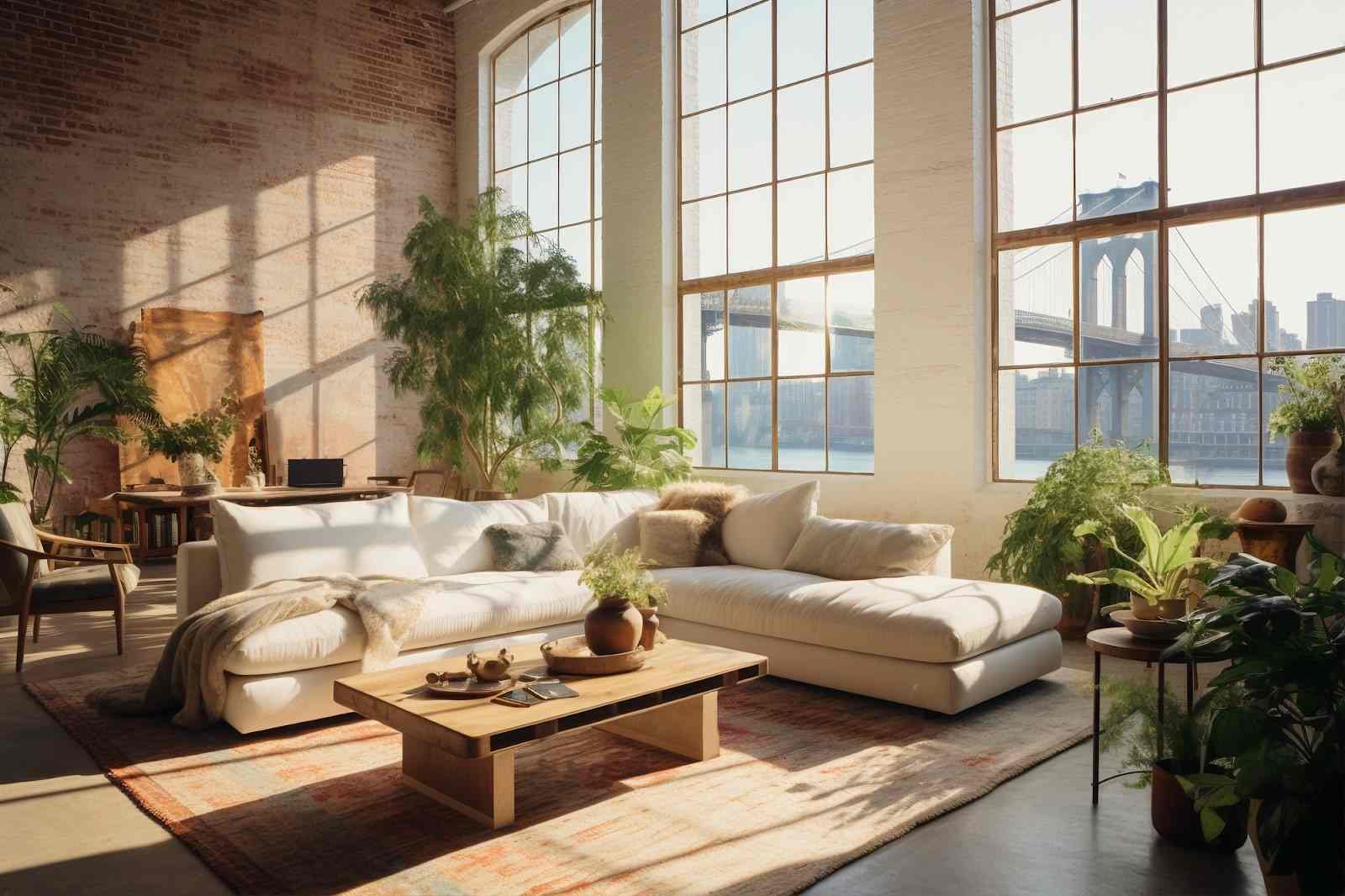
Bringing in more daylight has long been a goal of office design, but in 2025 the approach is far more refined. Layouts are being planned with a daylight-first strategy, maximising natural light penetration into workspaces to reduce reliance on artificial lighting and lower energy consumption.
Research consistently shows that exposure to daylight improves mood, focus, and productivity, making it one of the most effective wellbeing features in a modern office.
However, too much sunlight can lead to glare, overheating, and discomfort — which is why smart shading systems, reflective surfaces, and adjustable blinds are now standard in forward-thinking workplaces. These tools ensure that employees benefit from daylight without compromising visual comfort or thermal balance.
For business owners, this approach delivers a double return: lower energy bills and a healthier, more energised workforce. When embedded into eco-friendly office interior design, daylight-first strategies demonstrate a seamless balance between sustainability and human-centric design.
13. On-Site Renewable Energy
The transition to clean energy is now a defining feature of sustainable office design. More companies are installing rooftop solar panels, harnessing renewable power directly on-site to reduce dependency on fossil fuels and lower operating costs over time.
For offices without sufficient roof space, renewable energy contracts or green power purchase agreements offer a viable alternative, ensuring that daily operations are powered by clean sources.
The impact goes beyond reduced emissions. Businesses that adopt on-site renewables demonstrate clear alignment with ESG goals, enhancing their credibility with investors, clients, and employees alike.
In Singapore, where energy efficiency is high on the agenda, integrating solar arrays or renewable energy solutions into eco-friendly office interior design is both a practical and strategic move.
By taking control of their energy production, companies future-proof their operations while contributing meaningfully to climate resilience.
14. Water-Saving Fixtures & Greywater Strategies
As water scarcity becomes a pressing global concern, efficient water management is an essential element of sustainable offices. Features such as low-flow taps, dual-flush toilets, and sensor-activated fixtures are now commonplace, helping reduce everyday consumption without compromising on user convenience.
These small yet significant design choices add up to substantial long-term savings in utility bills while showcasing responsible resource use.
Beyond fixtures, offices are also adopting greywater recycling systems, which capture and treat wastewater from sinks or showers for reuse in flushing or irrigation. This approach not only cuts down fresh water demand but also reduces the strain on municipal water infrastructure.
For corporate administrators in Singapore’s business hubs, implementing water-saving strategies is a straightforward way to demonstrate leadership in sustainability. Embedding these systems into eco-friendly office interior design delivers both environmental responsibility and operational efficiency.
15. Acoustic Design That Uses Sustainable Materials
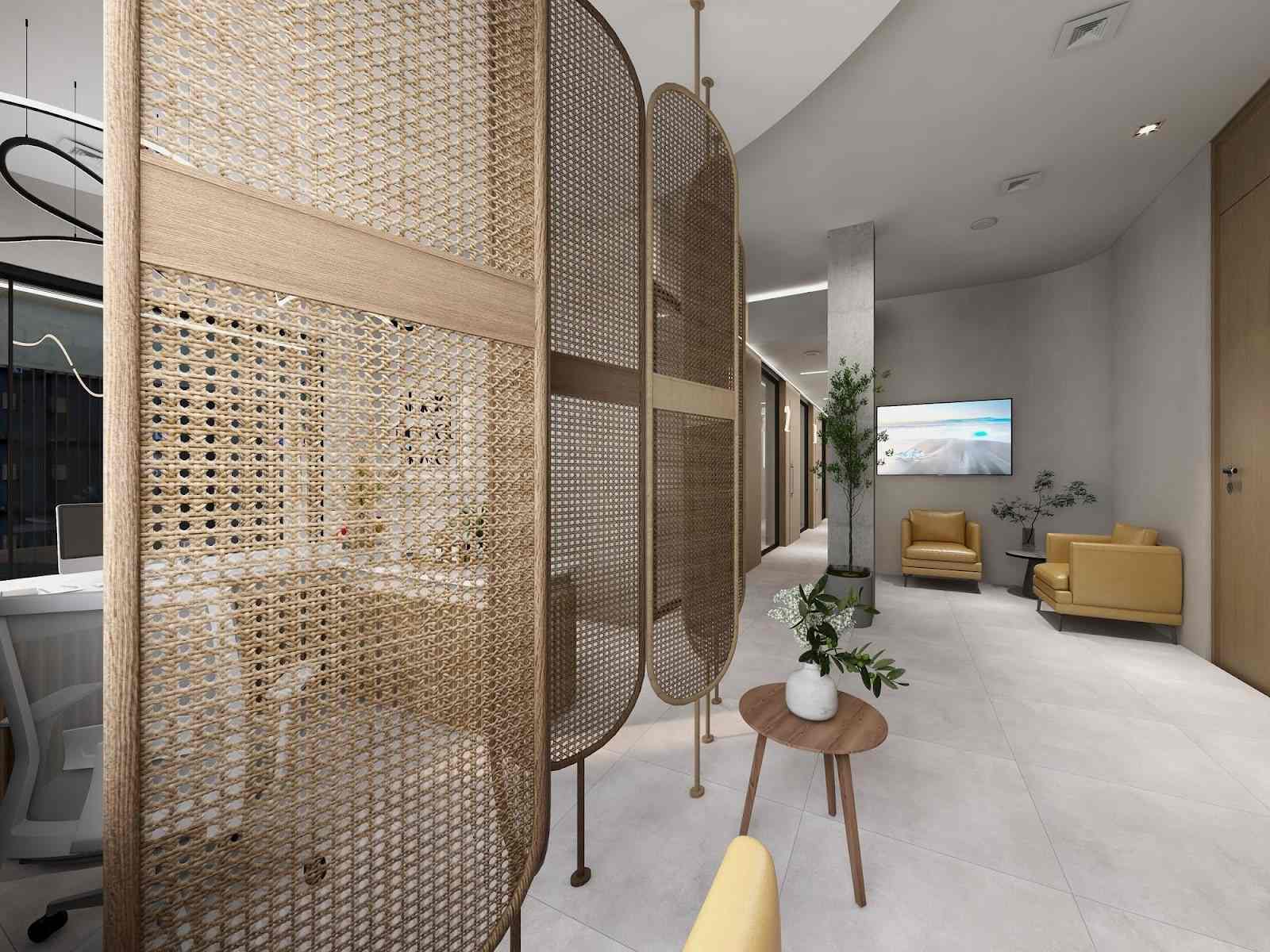
Noise control is no longer seen as a luxury in office design — it’s a necessity for productivity and wellbeing. Modern workplaces are adopting sound-absorbing panels, carpets, and wall finishes made from recycled textiles, reclaimed wood fibres, and even natural materials like cork or hemp.
These materials not only dampen unwanted sound but also fit seamlessly into eco-friendly office interior design, reducing reliance on synthetic foams or plastics with high environmental footprints.
Good acoustic design strikes a balance between privacy and collaboration. Open-plan offices can remain vibrant and energetic while still offering quiet zones for focused work, thanks to sustainable acoustic solutions.
For businesses, the benefits are twofold: reduced distractions leading to higher productivity, and a strong sustainability narrative that resonates with both employees and clients. By embedding eco-conscious acoustic materials into design strategies, companies create workplaces that sound as good as they look.
16. Circular-By-Design Procurement
Procurement in 2025 is evolving from simple cost considerations to circularity as a core principle. Companies are increasingly selecting furniture, finishes, and building materials designed for reuse, refurbishment, or recycling at the end of their lifecycle.
This means avoiding disposable, single-use products and instead prioritising suppliers who can provide take-back schemes, modular components, or certified recycled content.
For corporate administrators, circular procurement offers more than environmental gains — it helps manage budgets, reduces waste disposal costs, and aligns directly with ESG commitments.
In Singapore’s competitive market, such practices are a clear differentiator, showcasing a business as progressive and socially responsible.
By adopting circular-by-design strategies, organisations not only minimise environmental impact but also future-proof their workspaces with systems that support longevity, adaptability, and responsible resource use.
17. Furniture-As-A-Service (FaaS) & Leasing Models
The concept of Furniture-As-A-Service (FaaS) is transforming how companies think about office interiors. Instead of purchasing desks, chairs, and storage outright, businesses lease furniture under flexible agreements that allow upgrades, replacements, or returns when needs change.
This approach significantly reduces waste, as pieces are refurbished, reused, or recycled by the provider rather than ending up in landfill.
For corporate administrators, the financial advantages are just as appealing. Leasing models shift capital expenditure to manageable operational costs, freeing up resources for other business priorities.
In Singapore’s rapidly evolving business environment, where hybrid work and growth patterns require agility, FaaS ensures offices remain adaptable, sustainable, and aligned with eco-friendly office interior design principles without incurring unnecessary waste or costs.
18. Green Roofs, Courtyards And Outdoor Workspaces
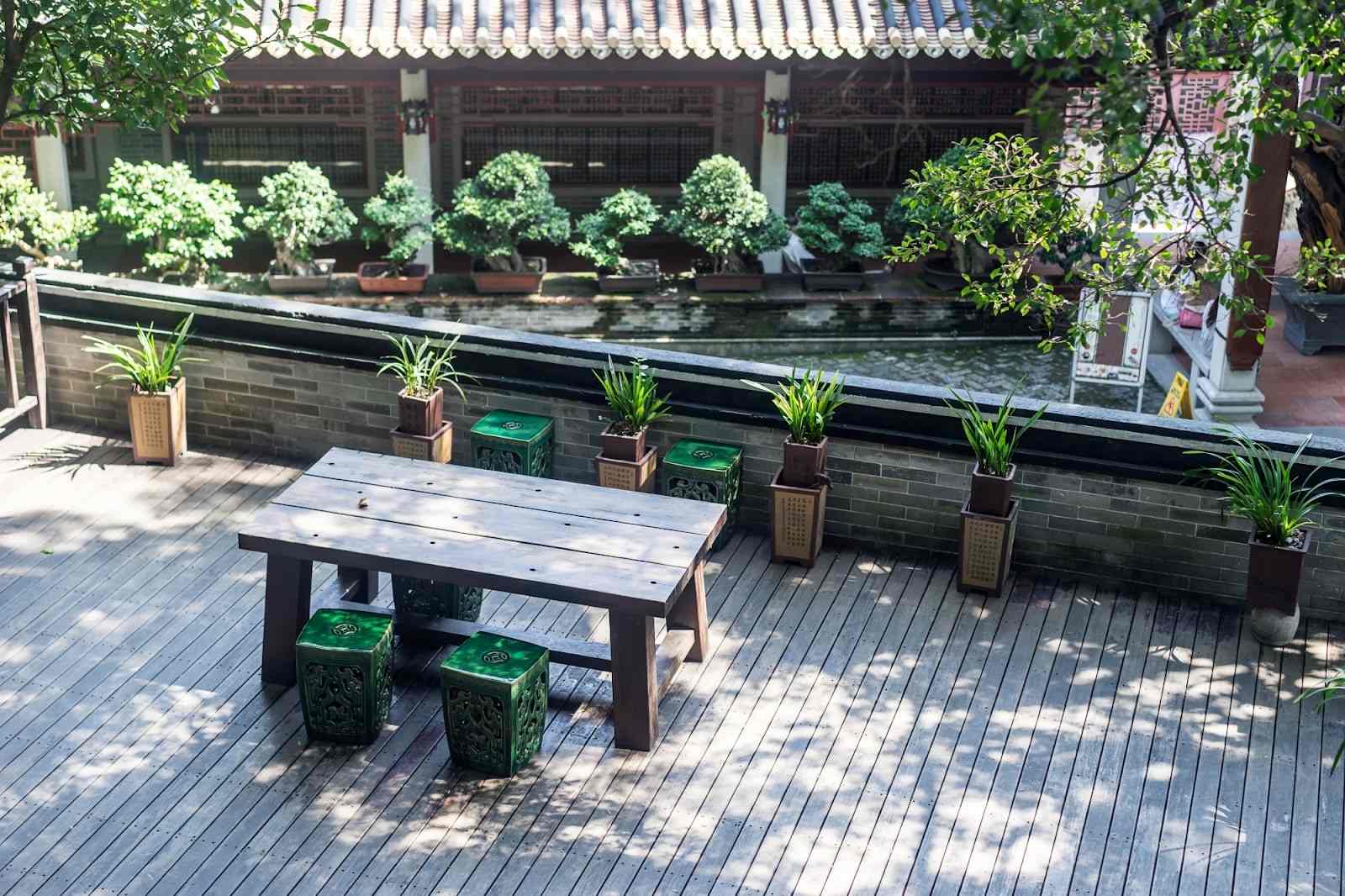
Office buildings are no longer limited to four walls and fluorescent lights — the future is about blending the indoors with the outdoors.
Green roofs, landscaped courtyards, and open-air terraces are becoming popular features, offering natural insulation that lowers energy costs while providing employees with restorative spaces to recharge.
By reducing urban heat and improving biodiversity, these features contribute to healthier cities as well as healthier workplaces.
For employees, access to outdoor workspaces supports wellbeing, creativity, and stress reduction, offering an attractive alternative to traditional indoor settings.
For business owners, the benefits extend to reduced energy bills, higher property value, and a compelling sustainability story to share with clients and stakeholders.
In Singapore, where urban density is high, incorporating green roofs and outdoor courtyards makes eco-friendly office interior design both functional and inspiring, positioning companies at the forefront of workplace innovation.
19. Active Facades & Smart Glazing
The exterior of office buildings is now playing an active role in energy management. Dynamic façades and smart glazing systems automatically adjust to external conditions, controlling heat gain, glare, and daylight penetration without the need for excessive air-conditioning or artificial lighting.
These innovations reduce energy demands significantly, helping companies cut operational costs while achieving sustainability targets.
Beyond efficiency, active façades and glazing enhance occupant comfort by maintaining consistent indoor temperatures and reducing visual strain. Employees benefit from a more stable and enjoyable environment, while businesses showcase their commitment to high-performance, eco friendly office interior design.
In a dense urban market like Singapore, where energy efficiency and comfort are equally critical, integrating smart building skins is a future-forward choice that delivers measurable results.
20. Resimercial & Nature-Forward Finishes
The line between home and office is becoming increasingly blurred, and design is following suit. Resimercial design — blending residential comfort with commercial durability — is on the rise, with natural finishes like wood, stone, rattan, and plant-based textiles creating spaces that feel warm, familiar, and inviting.
These finishes not only enhance aesthetics but also support sustainability when sourced responsibly.
Nature-forward materials are more than a design statement; they actively contribute to employee wellbeing. A workplace that feels less sterile and more welcoming encourages creativity, reduces stress, and fosters a sense of belonging.
For corporate leaders in Singapore and beyond, adopting resimercial, sustainable finishes ensures their offices are not just places of work but environments that inspire loyalty, satisfaction, and performance — all while aligning with eco-friendly office interior design principles.
21. Thermal Comfort Design With Passive Strategies
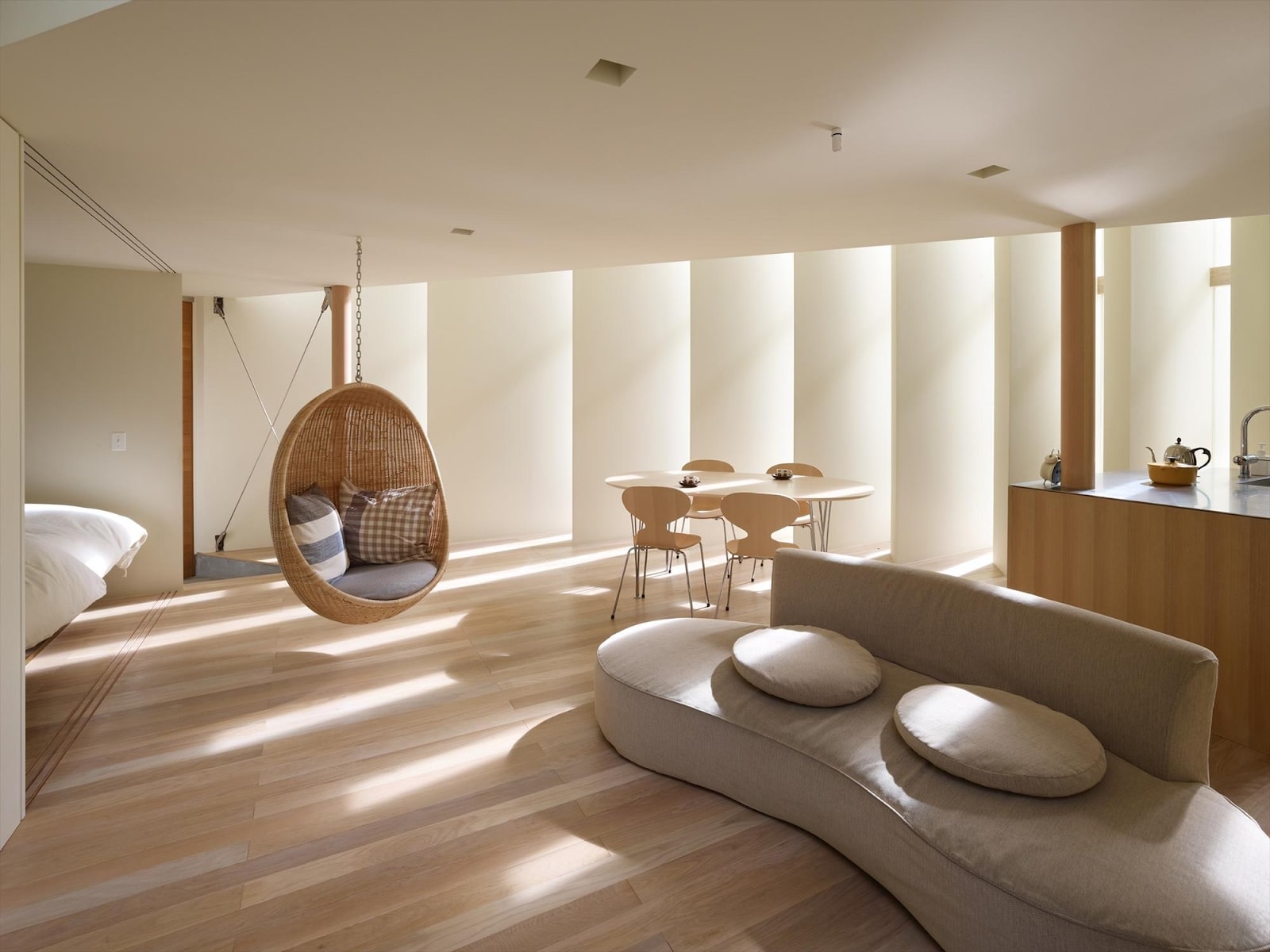
Maintaining comfort in the workplace doesn’t always need to rely on energy-hungry HVAC systems. Passive design strategies such as shading devices, operable windows for natural ventilation, and the use of thermal mass in walls or floors help regulate indoor temperatures naturally.
By harnessing these methods, businesses can significantly reduce their energy consumption while providing employees with healthier, more comfortable environments.
For administrators, the benefits extend beyond energy savings. Passive strategies reduce long-term operational costs, lower carbon emissions, and increase resilience in the face of rising energy prices.
In Singapore’s tropical climate, where cooling demands are high, integrating passive techniques into eco-friendly office interior design allows companies to strike the right balance between sustainability, comfort, and cost-efficiency.
22. 3D-Printed And Locally Fabricated Components
Technology is reshaping how office interiors are built and fitted out. 3D printing now enables companies to produce customised furniture, partitions, and fixtures on demand, often using recycled plastics, bio-based composites, or other sustainable materials.
At the same time, sourcing from local fabrication workshops shortens lead times, reduces transport emissions, and supports regional economies.
This approach is both innovative and practical. By reducing reliance on mass-produced imports, businesses can create unique interiors while cutting waste and minimising delays in their projects.
For forward-thinking organisations in Singapore, adopting 3D-printed and locally fabricated components demonstrates a strong commitment to innovation and sustainability — a powerful combination for companies seeking to stand out with their eco-friendly office interior design.
23. Data-Driven Occupant Experience Platforms
Technology is now central to how offices are run, with data-driven platforms offering real-time insights into space usage, energy consumption, and employee needs.
Smart workplace apps allow staff to book desks or meeting rooms on demand, while sensors track occupancy to optimise lighting, air-conditioning, and even cleaning schedules. This ensures resources are used only when and where they are needed, significantly cutting waste and operational costs.
For corporate administrators, these platforms provide actionable intelligence that enhances efficiency while improving the overall employee experience. From reducing unused office space to creating personalised comfort settings, data-driven solutions align seamlessly with eco-friendly office interior design goals.
In a city like Singapore, where every square metre of office space comes at a premium, leveraging workplace technology is both a competitive advantage and a sustainability strategy.
24. Visible Sustainability Storytelling
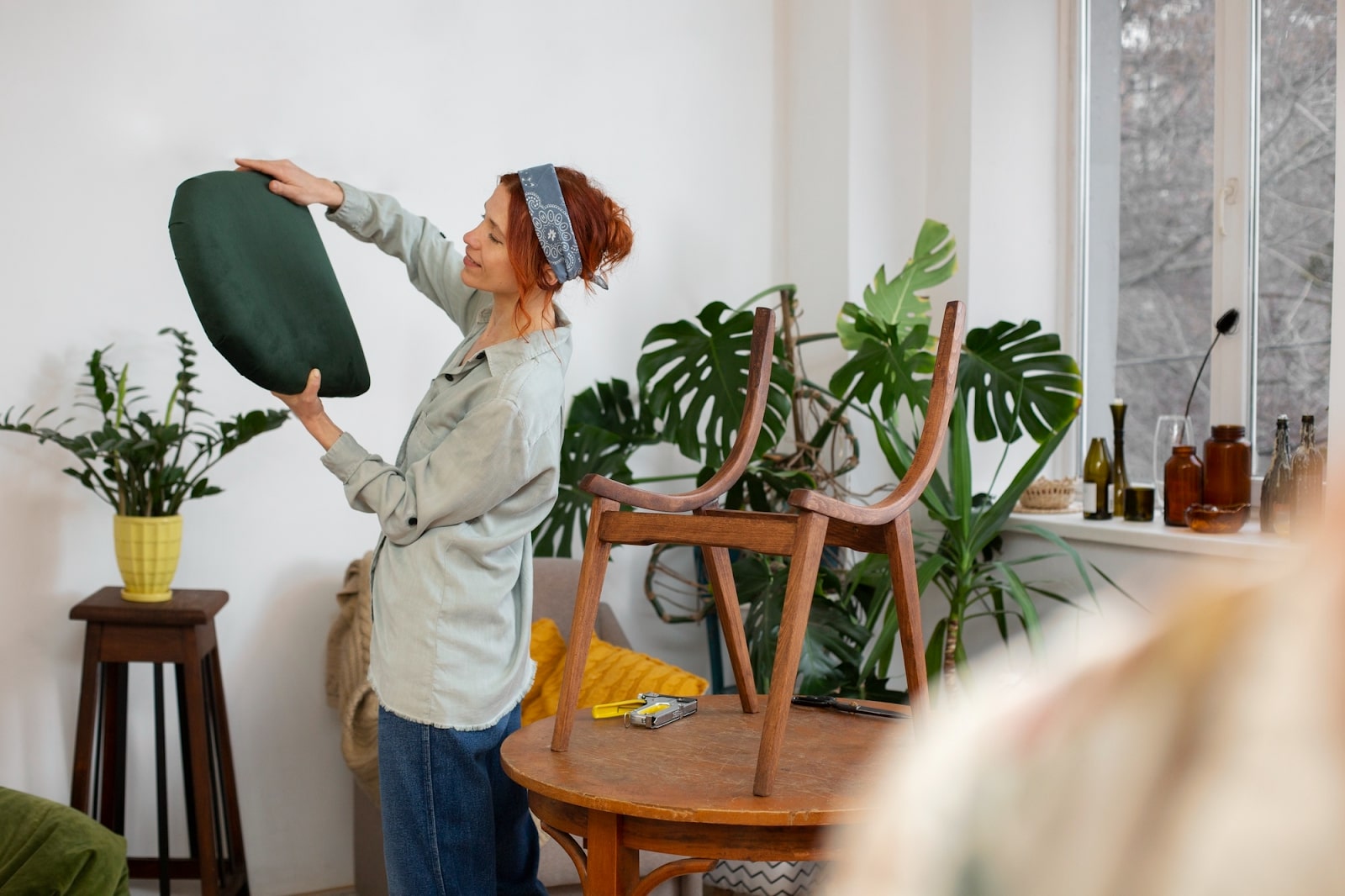
Sustainability is most powerful when it is seen and felt, not just reported in annual reviews. Many companies are now installing dashboards, digital displays, and signage that show real-time energy savings, water usage reductions, and carbon footprint data.
This transparency not only builds trust with employees and visitors but also reinforces a culture of accountability across the organisation.
For businesses, visible sustainability storytelling serves as both education and inspiration. Employees are more engaged when they can see the tangible impact of their actions, while clients and partners are impressed by the openness of reporting.
By weaving sustainability into the very fabric of the workspace, organisations create offices that showcase progress while staying true to eco friendly office interior design principles.
25. Design For Disassembly
In 2025, forward-looking offices are being built with the end of their lifecycle in mind. Design for disassembly means that walls, furniture, and fixtures are constructed in modular ways that can be easily taken apart, repaired, reused, or recycled.
Instead of demolition leading to mountains of waste, interiors can be adapted or repurposed with minimal environmental impact.
This strategy makes both environmental and financial sense. Companies avoid high disposal costs, extend the value of their investments, and contribute to a circular economy that prioritises longevity.
For businesses in Singapore, adopting design for disassembly ensures that their eco-friendly office interior design remains adaptable to future needs while reinforcing a strong commitment to sustainable practices.
Conclusion About Eco-Friendly Office Interior Design
Eco friendly office interior design is no longer an option — it’s the standard for forward-thinking businesses in 2025. The trends shaping today’s workplaces show a clear direction: sustainability drives efficiency, supports employee wellbeing, and strengthens a company’s brand reputation.
From biophilic design and circular materials to smart building technology and renewable energy, each innovation proves that greener choices lead to measurable benefits for both people and businesses.
If you are looking to bring these ideas to life in Singapore’s competitive business landscape, consider partnering with Yangs Design Associates.
Established in 2017, we combine the creativity of seasoned interior designers with the technical expertise of experienced contractors, ensuring every project is both functional and inspiring.
Whether you need Pre-lease services, Design & Build, Consultancy, or Reinstatement, our tailored solutions are designed to maximise your space, enhance productivity, and reflect your unique brand identity.
At Yangs Design Associates, we go beyond design — we create environments that enable success. Contact us today for a free consultation and non-obligatory quotation, and let’s build a workplace that’s as sustainable as it is exceptional.
Frequently Asked Questions About Eco-Friendly Office Interior Design
Are Eco Friendly Office Interior Design Features Difficult To Maintain?
Eco friendly office interior design features are generally easy to maintain because many are built for durability and long-term use.
Materials such as bamboo, recycled metal, and modular furniture are designed to withstand heavy usage while requiring minimal upkeep. Smart systems also automate energy and air quality management, reducing the need for constant manual oversight.
Is Eco-Friendly Office Interior Design Only For New Office Buildings?
No, eco friendly office interior design is not limited to new builds. Existing offices can be retrofitted with sustainable solutions such as LED lighting, low-VOC finishes, and recycled furnishings. Even small upgrades can significantly reduce energy consumption and improve workplace wellbeing.
When Should A Company Consider Eco-Friendly Office Interior Design?
The best time is during major milestones such as a lease renewal, office move, or refurbishment project. However, companies can also introduce eco-friendly upgrades gradually, starting with energy-efficient systems or sustainable furniture. Acting sooner allows businesses to realise cost savings and brand benefits more quickly.
How Does Eco-Friendly Office Interior Design Impact Workplace Culture?
Sustainable offices promote a healthier, more inspiring environment that makes employees feel valued and motivated.
Features such as natural light, greenery, and flexible layouts encourage collaboration and creativity. Over time, this builds a culture that aligns employee values with a company’s commitment to sustainability.
How Does Eco-Friendly Office Interior Design Affect Indoor Air Quality?
Eco friendly office interior design uses low-VOC paints, sustainable finishes, and improved ventilation systems to reduce pollutants indoors.
The inclusion of air-purifying plants and advanced filtration also enhances overall air freshness. Better air quality leads to fewer sick days, sharper focus, and higher employee productivity.

